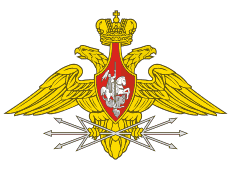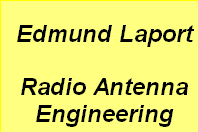|
Spreading
and Undeground Antennas are widely used
at Stationary Radio Communication Bases of Russian military. Some
of such old antennas were described at Reference 1.
The
article is described another Russian military
Spreading Antennas- BAZA- 500D and BAZA- 1500D. The antennas
are used until recent days. Article is published with unimportant
cutting.
73!
I.G.
References: I. Grigorov. Antenny. Gorodskie Konstrukcii. M.: RadioSoft, 2003. ISBN: 5-93037- 109-1. In Russian
|

Insignia of communication troops
of Russia
|
|
Practice shows that after both or nature disasters
(hurricane, snowstorm, etc.) either just a planned turn off of
stationary antennas (repair work or preventive
inspection) it is possible very fast restore the radio communication
using Spreading Antennas (SA). The antennas can provide communication
coverage near and far distances.
Here it is necessary to note here, that design for
SA used for ionosphere radio communication is defined by the necessary
frequencies band and distance. The longer is the distance the
lower should be antenna lobe. For close distances (up to 500-600
km) use NVI (Near Vertical Incident) which is radiated at 65-
90 degree. Interesting, that the antennas may have low G (gain).
Antennas radiated at 20- 65 degree are suitable for
middle distances up to 2000 km. Far distances (more the 2000 km)
require antennas radiated at 5- 20 degree. However, the more is
distance the more gain should be antenna have to compensate losses
at propagation. Receiving SA should have good directivity and
gain (although the requirements for gain are not so tie as to
transmitting SA).
Practice shows
that SA intended for ionosphere communication should be made broadband
(low directivity at 1,5- 12 MHz (i.e. NVI, I. G.),
high directivity at 3- 30 MHz) and the SA should have good match
with feeder and good efficiency (travelling-wave factor must be
lower the 0.3).
|
Such
SA can provide communication at day and night on any period solar
activity (high and low).
Russian SA BAZA- 500D, BAZA 1500D, BAZA- MD (several phasing BAZA 1500D) meet the above writing
requirements. The SA has been working for years at Soviet Radio
Bases and these ones are very reliable in operation. These SA
are described below. Spreading Antenna BAZA 500D is a low directivity
one. It is NVI antenna for 2- 10 MHz. The antenna described at
Voennyj Vestnik # 9, 1993 (Russian military magazine). Design of
the SA is shown at Figure
1.
BAZA – 500D:
SA
implemented from four in pairs reciprocally orthogonal flat shunt
radiators (so called Square Radiated Vibrator (SRV)
item 1. Each SRV has sides equal to
3 meters. SRV made from metal tape having 1 mm thickness and 20
mm wide. SRV connected each other by shunt item
2.
One pair parallel vibrators of the module is fed at
points a- a by lengths of a 75- Ohm coaxial item
3, the lengths connected to main feeder
item 7 (hts
eats in points and - and " with the help of distributive
pieces 3 coaxial cable RK-75, which incorporate
with feeder
7 (75- Ohm coaxial ) through a matching
length of 50- Ohm coaxial, item
5. Other pair SRV is feed at point b- b
with help items
4, 6, 8 (similar to 3, 5, 7).
|














